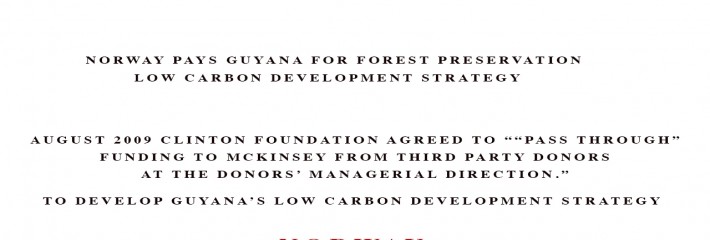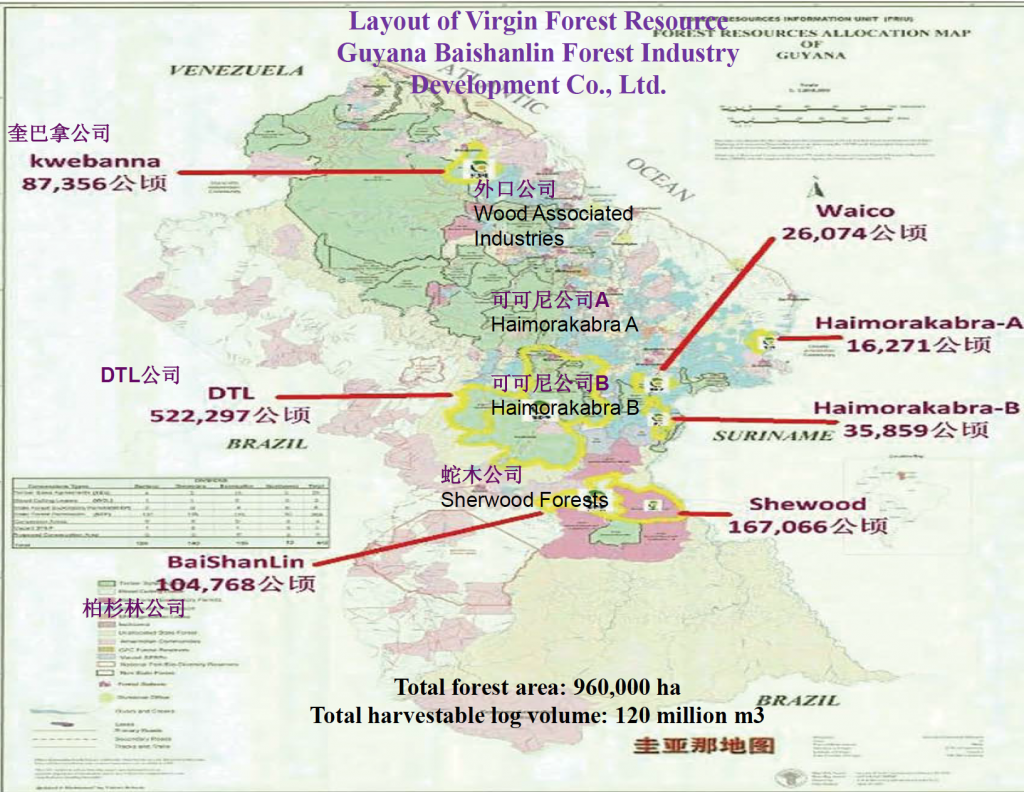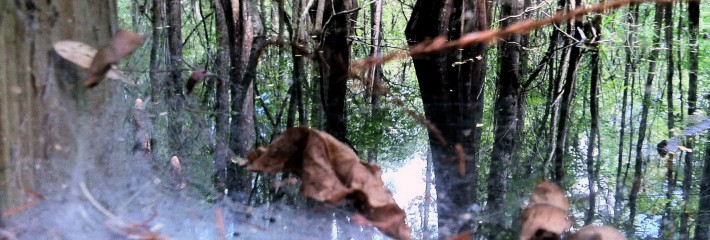From the archives of 2003 because #lifeinleggings out of Barbados and recent murders in Trinidad & Tobago, reminds us that the fight cannot stop…all are involved:
“When last anyone see anything, with the word Guyana on it, that people have signed on to, across race, across class, across gender, across age, across national borders, even Caribbean academics and artists? Or the responses from chutney singer, Terry Gajraj, saying he really wants to help, or the Mighty Sparrow saying to sign him up, to Rikki Jai saying that we should sign him up and that he and Black Stalin are working on songs that addresses some of these issues in Trinidad, to some Caribbean artistes letting us know if we come up with lyrics they will contribute their talents and come up with a song, to Trinidadian DJ’s saying they want to join the list too, to Guyanese everywhere offering to contribute money for full page advertisements? Perhaps elsewhere in the Caribbean people will not only sign on, but take example in their own situations.
And finally, we may think it is symbolic, or can’t come to anything. But look what does happen when you put a bunch of educated people together (and yes, I include myself here), we does pontificate, we does quarrel, baby party does bruk up, we does talk and talk and talk…..and over 30 people already murdered in Guyana for 2003. Someday we may say nothing much came of this, but for now, a strategy whereby you choose what I call ‘the lowest common denominator’ (and that was just to say if you agree that the killing must stop NOW, then sign on) to get Black, Indian, and Amerindian, rich and poor, man and woman to sign on, is a good strategy. If we don’t do this, and we immediately start instead by putting forward positions or reasons why the violence happening, then the can buss open, Rishee cussing Josiah, Josiah cussing Rishee and we don’t move forward.
If we can generate some generosity of spirit with this, we have done a lot.
The women in Guyana are not speaking. They are acting. We are near the bottom. How much does it take to give them the benefit of the doubt, place some of that little bit of hope you have left in what they are doing, and have just a little faith.” Alissa Trotz
Many Signed onto the ADs that were placed in Newspapers in Guyana. The AD heading read:
We, the undersigned are writing to express our collective horror at the violence in Guyana, and to register our solidarity with the women of Guyana who, by coming out to the Cenotaph in Georgetown on Friday January 24th and 31st, 2003, are courageously taking a public stand against this madness. They do this in all our names. STOP ALL THE KILLINGS…..NOW!!
Signed,
Updated 11/2/03 (486 names)
3 CANAL
Abbyssinian, Artist, New York
Abena Cummings
Adam Lynch St. Kitts & Nevis
Adana Collins, MahoganyBlues.com
Agnes Griffith
Aileen L. Fox
Aileen Thomasson
Alesia Ferguson, Stanford University
Aletha Wills
Alexis J
Alice Miller-Thomas
Alison Hinds, SQUARE ONE, Barbados
Alissa Trotz, University of Toronto
Aliyah Khan
Allana Persaud, Guyana
Allison Butters-Grant
Allison Lindner
Alvina Rambarran
Amlata Persaud
Anastasia Persaud
Andre & Natalie Belmonte Florida Business owners
Andrea B’Shaw
Andrea Delph, Occupational Therapist, Maryland
Andrew Ballantyne, United Kingdom, Trinidad & Tobago
Andy Ninvalle
Angela Osborne
Angie Rose, Helsinki, Finland
Ann Munroe
Ann O’Brien
Anthony Cummings
Anthony Persaud,Marketing Director ,World Financial Group
Anthony S Persaud and family
Antoinette Bacchus
Ariane Mangar
Arnold Itwaru, University of Toronto
Arturo Tappin
Asafa George
Ashmid Ali, Civil Engineer
Association of Artists & Writers Inc. in New York
Aubrey Gonsalves Brampton Canada
Aubrey Woon-A-Tai
Audrey Cyrus
Audrey Lilloo-Fraser
Audrey Bobb
Ayanna Kambui, Washington DC
Ayanna Wickham
Ayenni Dougan-McKenzie
Ayodele Browne
Azad Mohamed
Azad Shaheed Toronto,Canada
Azar Ali
Azar S. Ali
B. Prashad
Barbara Thomas-Holder
Basil Lucas
Bernard Heydorn, Novelist, Canada
Bonnie Singh
Bernice Walmesley Scarborough Ont.
Bert Haitsma
Beverly Conway, El Salvador
Bibi S. Sultan
Black Stalin, Calypsonian, Trinidad and Tobago
Bob Singh
Brad Tafa Hemmings of Afiwi.com, Miami
Brenan Finch
Brenda Chester DoHarris, Bowie State University
Brian Meeks, University of the West Indies, Mona
Bridgit Antoinette Evans The Venus Project New York City
BUJU BANTON
BUNJI GARLIN
C. Wilson
Camille Correia
Camille McKenzie
Camille Willock
Candace Walcott-Shepherd, NJ
Candice Ramessar
Carl Hosannah Jr
Carmen Ann Subryan
Carmen Barclay Subryan Howard University
Carmen Outridge
Carole Fraser
Cary Fraser, Pennsylvania State University
Cassandra Perry
Cathryn Jackson
Cavelle Lynch
Cavelle Lynch, University of Warwick, UK
Cecelia Dolphin
Cecilia Green, University of Pittsburgh
Cecilia Rose, Geneva Switzerland
Centime Zeleke, York University
Chandra Budhu, Toronto
Chantalle Smith
Charlotte Williams Writer and Broadcaster UK.
Cheryl Williams
Chico Khan, Boston, MA
Chris G. Aird
Claremont Kirton, University of the West Indies, Mona
Clement Gail
Clinton Ritchie
Colin Baird
Colin Cholmondeley, Mustard Seed Communities/ROOTS FMJamaica
Colleen gonsalves
Cosbert, Winston
Cynetta Delisse Halls Freeman, Atlanta, GA
Daiann Singh Baruch College New York
Danesh Chowritmootoo
Danny Rampersaud -Toronto,Canada
Daphne De Peana
Dave Martins, TRADEWINDS
David Hinds
David Mahesh, Capitol Engineers, PC
David Scott, Columbia University
Davina Stephenson
Dean M. Jackson
Debbie Singh
Debra Gibson- Welch
Denise DeCaires Narain, University of Sussex
Denise Dias
Denise Holder
Denise Robinson
Denyse Bernard
Derrice Deane
Desa Calder
Desiree Gomes
Desrey Fox, Rice University
Devendra Sahadeo
Devina Sharma
Dhanraj Bhagwandin
Diana Abraham
Dion R Allicock
Dominic Willock
Donna Brown, Guyanase, London
Double XPLOJUN, BARBADOS
Dr. Kimani Nehusi University of East London UK
DRUPATEE, Soca/Chutney singer, Trinidad and Tobago
Dwayne Hackett
E. Hopkinson
E. Ramdin – Toronto Canada
Ebenezer Oloyede
Ed Yhap, UG Guild of Graduates, Ontario
Edith Joan Payne
Elizabeth Gopaul
Emanuel Mendonca, President OBG, Toronto, Canada
Enakshi Dua, York University
Eon Canzius, NYC
Erin Lane Schuck, Palm Bay, Florida (USA)
Esther Roth-Dias
Ewart Thomas, Stanford University
F. Yvonne Jackson, Chicago, Illinois – USA
Fahd Ahmed Brooklyn NY
Fareena Mahmood
Farida McDougall
Fedora Galasso
Ferrolisha Griffith
Feyi Rodway
Fianna Holder MSc. Imperial College Uni.
Fiona Holder, University of Waterloo, Canada
Frances Shepherd
Francesca Pires
Frank Henry, Artist, Canada
Gary Girdhari, Editor, Guyana Journal
George Mentore, University of Virginia
Gery Barry
Gilbert Campbell
Gina James
Gina Singh
Glenn Fraser
Godfrey Chin
Gordon Watson
Grace Aneiza Ali
Grace Nicholls, Poet, UK
Hannah Buck
Harold Drayton, University of Texas , Galveston
Hon.Prof.Dr.Harold R. Persaud Radio/TV Talkshow Host
Harry Hergash, UG Guild of Graduates
Hemraj Muniram Ontario
Henry Ramnath, Toronto, Canada
Hilbourne Watson, Bucknell University
Hollis France, Charleston College
Honor Ford Smith, University of Toronto
Horace Benjamin
Horace Campbell, Syracuse University
Horace Henriques, University of Toronto,
Hubert C. Roberts
Hubert Devonish, University of the West Indies, Mona
Hugh Hartley, Guyana
Imran Bacchus
Indira Anandjit
Ivor Ramroop
Iwer George, Soca singer, Trinidad and Tobago
Jacqueline Massiah
Jai Parsram
Jan Lo Shinebourne, Novelist, UK
Jean Forbes, Toronto
Jean Sankies
Jeanette Singh, UG Guild of Graduates, Ontario
Jennifer M. Stewart-Page
Jennifer Roman, Antigua
Jennifer Singh, Educator, Toronto, Canada
Jerry King
Jewel Whinfield
Joan Anne Jordan
Joan McCloggan
Joan T. Seymour
Joan-Ann Gravesande
Joanna Helen Campbell, Stanford University
Johann Trotz Singh
John Agard, Poet, UK
John Rickford, Stanford University
John Slingshot DrePaul (calypsonian)
Jonelle Reynolds
Joseph B. Collins, Manchester,UK
Joseph Sealey
Joy A Noble
Joyce Ramsubick, Ryerson University, Toronto
Juanita De Barros, University of Western Michigan
Judith McLean
Judy Butters
Juliet Tucker Chalmers
June Bobb, Queen’s College, City University of New York
June Gibson
K. Zaman Ali
K.K. Bhagwandin
Kafi Gordon
Kafi Langevine Payne, Oakland, CA
Kamal Singh-Matthews, Artist, UK
Kamala Kempadoo, York University
Kamau Bobb
Kampta Karran, University of Warwick, UK
Karen Abrams Atlanta
Karen Alexander
Karen Jardim
Karen Sutherland
Karen Wharton
Kathleen Drayton, University of the West Indies, Cave Hill (Retired)
Kathleen Gittens
Keith Corsbie
Keith Moses Toronto Canada
Keith Thom
Keith Waithe, Musician, UK
Kerry Rittich, University of Toronto
Kevin “Ital-K’ Smith of WLRN Radio + Afiwi.com, Miami
Kevin Yelvington, University of South Florida
Kim Cook
Kiran Mirchandani, Ontario Institute for Studies in Education
Kiroon N Singh (Faye)
Krishna Madan, Maui Hawaii
Kristina Balram
KROSFYAH, Barbados
Kumar Tiwari
Lance Thomas
Learie Bain
Lee Shepherd
Leila Parris, Georgetown,Guyana
Leon Christian, Guyanese. Atlanta
Leon Ramessar
Leslie Camacho, New York
Leslie Nedd
Linda Peake, York University
Linden F. Lewis, Bucknell University
Lindsay Davidson
Linzi Manicom University of Toronto
Lisa B. Thompson
Lisa Shadir
Lloyd Conway/Stabroek News
London England
Lourdeth Ferguson
L’roi Jones
Lucretia John
Lynda Bonnett
Lynette Gibson The Graduate Center CUNY
Machel Montano, Soca singer, Trinidad and Tobago
Maggie Kosmoll Mew
Mahesh Kissoon
Makeda Burton
Makeda burton
Malaika Cummings
Malaika Scott Amsterdam Netherlands
Malcolm Cho-Kee, Chairman of United Guyanese Organization
Malcolm Robinson
Marc C. Arthur
Marc Matthews, Poet/Storyteller, UK
Marcia Bumbury
Marcia Gomes
Marcia Shury, Italy
Margaret Kosmoll
Margot VigilanceMarieann Harvey
Marie Brandon, Australia
Marie Correia
Marie Correia Marissa Williams
Marilyn Baird
Mark Jacobs
Mark McWatt, University of the West Indies, Cave Hill
Mark S. Weekes
Martin Jaundoo
Maurice L. Linton
Maximus Dan
Maxine Moore – London, England
Maya Trotz, Stanford University
May-Lou Prince,Guyanese,New York
McDougall, Farida
Megan Grant-Gravesande
Melanie Newton, University of Toronto
Melissa Pollard
Melissa Yearwood
Michael Ashley
Michael Bobb
Michael Earl Lambert
Michelle Bolin
Michelle DeAbreu, Maryland
Michelle singh
Michelle Small
Mlilwana Osanku
Militant
Mrs. M. M. Khan
Mohan Lall
Monetta Edwards, San Diego CA
Moonsammy Raymond
Myrtle Richards,Cooperatives, Guyana
N. Ally, UG Guild of Graduates, Ontario
Nadira Persaud, Educator, Toronto, Ontario
Nalini Mayroo – College of Charleston
Nalini Seenauth
NAN SINGH
Nancy Rickford Toronto
Naresh Gurpersaud
Narindra Dat, Educator, Markham, Ontario
Natalie Nesbith, York University
Natalie Samuels Myers
Natasha Moonsammy
Nekoda Clarke
Nesha Cole
Nesha Z. Haniff
Neville & Dawn Patrick
Neville George Novelist Texas
Neville Munroe
Nicole Barnwell
Nicole Moore-Clarke, Barbados
Nigel Bolland, Colgate University
Nigel Westmaas, University of Binghamton
O. Pindling, VISAGE BAND, Bahamas
Olga Hinds
Orin Greene Guyanese. New Jersey
Orin King
Orissa Karshi Samaroo
Pamela Chase
Pamela Ramdial
Patricia Kempadoo
Patricia London, Jouvay.com, CA
Patricia Rodney, Morehouse School of Medicine
Patricia Sheerattan-Bisnauth
Patsy Lewis, University of the West Indies, Mona
Paul Buhle
Paula Holmes
Paula Jackman-Duncan; N.Y
Paula Jordon Noble
Pauline Melville, Novelist, UK
Pearlie Wood
Pedro Noguera, Harvard University
Peggy Antrobus, University of the West Indies, Cave Hill (Retired)
Penny defreitas
Percy Hintzen, University of California, Berkeley
Perry Mars Detroit USA
Pet Hope
Philip Richards
Rachel Hazel
Rae Vanderhyden
Raj Persaud
RAJA-Soca Chutney Singer of Guyana
Rajindra Sankarpersaud
Rajindra Sankarpersaud
Rakesh Rampertab
Randolph B. Persaud, American University
Rannie Whyte
Rasheeda Forbes-Riley
Raul Christopher Seecharran
Ravi Jaundoo, Web Developer, Graphic Designer
Ravi Somar
Raymond King, Maryland USA
Raza Ally
RED RAT, Reggae Artist, Jamaica
Rhoda Reddock, University of the West Indies, St. Augustine
Richard Bhola
Richard Drayton, Cambridge University
Ricky Rampertab
Rikki Jai, Calypsonian, Trinidad and Tobago
Rishee S. Thakur/University of Guyana/Berbice campus
ROBERT GRAHAM
Robert S.Drepaul, The Association of Guyanese Overseas(AGOS)
Roberta Parris
Robin Hazel
Rochelle Clarke
Rocky Fraser
Rohan Sooklall
Rohilda Goodluck
Rohit Coonjah, Engineer, Guyana
Roianne Nedd-Waldron
Rolston Osborne
Ron Bobb-Semple
Ronette Carr
Rosalind Hintzen Baptiste
Roshini Kempadoo
Roslyn Baichoo
Roy Sears
Rozanna Ali Beaumont
RUPEE, Soca singer, Barbados
Rupert Lewis, University of the West Indies, Mona
Ruth White, Seattle University
Ruth-Anne Lynch
SALIMA HATIM
Salina Allie
Sally Bacchus, Canada
Samuel Legay LL.B
Samuel Walker
Sandhya Jokhu
Sandra Parris
Sanjhevi Kempadoo, Television Producer, Amsterdam
Sara Abraham, University of Toronto
Sarah Wilkinson-Eytle
Sarita Khan
Sattie Bulkan
Sears,Roy
Selwyn Seyfu Hinds/New York City/author
Shamita Singh
Sharmila Sadik
Sharon and Jacqueline Brusch
Shelly Ann Anthony USA
Sherene McDougall
Shirley Cameron
Shivani Jagmohan
Shiyama Rickford
Shurmine Smith
Simone Gill, Columbia University, New York
Simone Holden
Sister Hazel Campayne, Canada
Sonia Rosen, Philadelphia, PA
Sophia Gallina
sravasti persaud york college,city university of new york
St Elmo Hughes
Stacey Payne
Stacey Phillips
Stella Otto Beard
Stephanie M. Huelster, University of Wisconsin-Madison
Steve Semple
Storm P. Jackson
Surya Rambarran
Taharimoon Ali, UG Guild of Graduates
Tahseen Nasir
Tameca Sukhdeo
Tarique I. Nageer
Taryn De Mendonca
Tavis Jules
Terence Roopnaraine, Anthropologist
Terrence Richard Blackman
Terry Gajraj Soca/Chutney artist CT USA
THE MIGHTY SPARROW, Trinidad and Tobago
Toni Wilson
Tony Farnum
Tony Phillips, Painter, Australia
Trevor Karran
Uso Fraser
Vaidwattie Naraine
Valerie Glasgow
Valerie Mahadeo
Vandre Fonseca
Vanessa Baliram
Venus Tahal
Vera Moore
Vibert Cambridge, Ohio University
Victor Moses Brampton Canada
Vidushi Persaud
Vidya Jaisaree
Vince Ramcharran
Vivette Glen Lewis, Geisinger Medical Center, Danville PA
Vonetta Edwards
Vonna Lou Caleb Drayton, Texas Department of Health, Austin Texas
Walter F. Edwards, Wayne State University
Wayne Motayne, Canada
Wézon St Lucia
William (Bill) Moore
Winston Cosbert
Yeon Adams
Zainul Bacchus, UG Guild of Graduates, Ontario
Zennie Jardine









